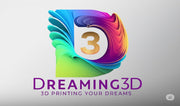Building a computer is a blend of art and science, a pursuit that combines technical knowledge with creative vision. Over the past decade, this field has seen remarkable advancements, making it an exciting time for both novice builders and seasoned enthusiasts. Let's explore the transformative journey of computer hardware development in the last ten years and its impact on the art of computer building.
The Evolution of Processors
Ten years ago, Intel’s Ivy Bridge processors were leading the market, offering significant improvements over their predecessors. Fast forward to today, and we are witnessing the dominance of AMD’s Ryzen and Intel’s Alder Lake series. The core counts have increased dramatically, with consumer CPUs now featuring up to 16 cores and 32 threads, a far cry from the 4-core norm of 2013. This shift has brought multitasking and productivity to new heights, allowing builders to create machines capable of handling demanding workloads like 3D rendering, video editing, and gaming simultaneously.
Graphics Card Revolution
The graphics card market has experienced a revolutionary leap. In 2013, NVIDIA’s GTX 700 series and AMD’s R9 series were the pinnacle of performance. Today, we have NVIDIA’s RTX 3000 series and AMD’s RX 6000 series, which not only offer unprecedented raw power but also introduce real-time ray tracing and AI-based enhancements. These advancements have transformed gaming and professional graphics work, making visuals more realistic and immersive than ever before.
Storage Innovations
Storage technology has also undergone a significant transformation. A decade ago, SATA SSDs were gaining popularity over traditional HDDs, offering faster boot times and file access speeds. Now, NVMe SSDs connected via the PCIe interface provide even greater speeds, drastically reducing load times and improving overall system responsiveness. These advancements have made high-speed storage more accessible and affordable, further enhancing the performance of custom-built PCs.
Memory and Motherboard Enhancements
Memory (RAM) capacities and speeds have seen substantial improvements. In 2013, DDR3 RAM was standard, with speeds ranging from 1066 to 2133 MHz. Today, DDR4 is the norm, with speeds often exceeding 3200 MHz, and DDR5 is on the horizon, promising even higher speeds and efficiency. Motherboards have evolved to support these advancements, offering more robust power delivery systems, better cooling solutions, and enhanced connectivity options, including PCIe 4.0 and USB 3.2.
Cooling Solutions and Case Design
Thermal management has always been crucial in computer building, and the last decade has seen significant innovation in this area. High-performance air and liquid cooling solutions have become more efficient and quieter. All-in-one (AIO) liquid coolers are now commonplace, offering excellent cooling performance without the complexity of custom loops. Case design has also evolved, with modern cases featuring better airflow, modular designs, and aesthetically pleasing tempered glass panels.
Power Supply Units (PSUs)
The efficiency and reliability of power supply units have improved significantly. The adoption of 80 Plus certification standards has pushed manufacturers to produce more efficient PSUs, reducing energy consumption and heat output. Modular PSUs have become the standard, allowing for cleaner builds and better cable management.
The Impact on PC Building
These hardware advancements have made computer building more exciting and accessible. The increased performance and capabilities of modern components allow builders to create machines tailored to their specific needs, whether for gaming, content creation, or professional work. The emphasis on aesthetics, with RGB lighting and sleek designs, has turned PC building into a form of personal expression, where functionality meets style.
Conclusion
The last decade has been a golden era for computer hardware development. The advancements in processors, graphics cards, storage, memory, cooling, and power supplies have revolutionized the PC building landscape. As technology continues to evolve, the future promises even more exciting possibilities, making it a thrilling time to be a part of the computer building community. Whether you are a seasoned builder or a newcomer, the art of creating a custom PC has never been more rewarding or more accessible.
